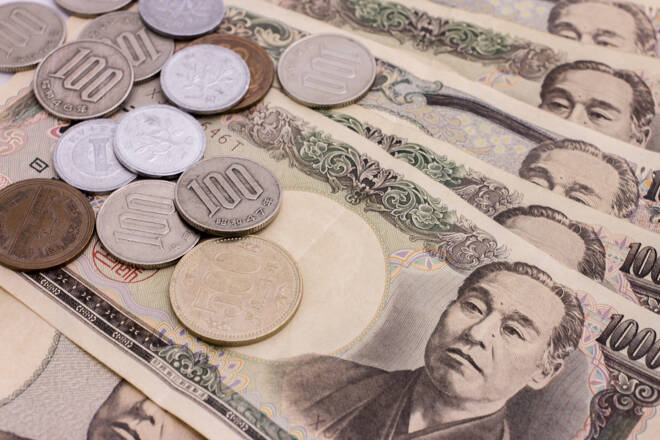Advertisement
Advertisement
USD/JPY Fundamental Daily Forecast – PM Suga, BOJ’s Kuroda Want to Stabilize Currency Moves
By:
Historically, a Yen spike has been a trigger for monetary easing by the Bank of Japan (BOJ), i.e. flood the market with Yen to weaken the currency.
The Dollar/Yen fell sharply last week and traders think it could see more losses as the election of Democrat Joe Biden and the Republican strength in the Senate are likely to make it difficult for the Democrats to promote Biden’s agenda.
Last week, the USD/JPY settled at 103.370, down 1.302 or -1.24%.
A large decline in long-term Treasury yields due to expectations for less fiscal spending, combined with a rally in equities and other risk assets, placed the dollar under consistent selling pressure that is likely to continue.
The wicked price swings in the USD/JPY not only caught the eye of speculators, but also Japanese Prime Minister Suga who expressed concerns over the volatility in the currency market, especially the Japanese Yen.
Japan’s Suga Says Stable Currency Moves ‘Extremely Important’
Japanese Prime Minister Yoshihide Suga on Friday vowed to work closely with overseas authorities to keep currency moves stable, signaling his readiness to respond to any yen spike that threatens to derail the country’s fragile economic recovery, Reuters reported.
“Exchange-rate stability is extremely important,” Suga told parliament, when asked how Japan will respond to any changes a new U.S. administration could make to its dollar policy.
“We will respond appropriately on markets, while keeping in close contact with overseas authorities,” Suga said. He declined to comment on specific currency levels or moves.
Suga’s remarks followed those by Bank of Japan Governor Haruhiko Kuroda, who said on Wednesday the central bank will work closely with financial authorities to help keep currency moves stable.
Yen Spike Could Lead to BOJ Intervention
On Friday, the USD/JPY plunged to an eight-month low at 103.177 as investors expressed concerns that a Joe Biden presidency combined with Republican control of the Senate would dampen hopes for a large stimulus package to support the economy any time soon.
Historically, a Japanese Yen spike has been a trigger for monetary policy easing by the Bank of Japan (BOJ), i.e. flood the market with Yen to weaken the currency. Additionally, policymakers have been known to jawbone and use the news to try to talk the Japanese Yen lower in order to prevent a strong currency from hurting Japanese exports.
But what is the level that will prompt an actual intervention from the BOJ? 102.00? 101.00? 100.00? No one knows for sure, but we expect short-sellers to continue to poke the downside in an effort to find this point.
Earlier, we used the word “historically” to describe a previous response to higher Yen by the BOJ. Given the COVID-19 crisis and the fact that all the major economies are in the same boat, it’s going to be hard for Japan to convince the other major central banks that an intervention is necessary. In other words, everyone would like to see their currencies weaker in order to drive up exports, so what makes Japan so special. If this is the case, then the BOJ would have no choice but to deepen negative interest rates if the Japanese Yen spikes to high.
For a look at all of today’s economic events, check out our economic calendar.
About the Author
James Hyerczykauthor
James Hyerczyk is a U.S. based seasoned technical analyst and educator with over 40 years of experience in market analysis and trading, specializing in chart patterns and price movement. He is the author of two books on technical analysis and has a background in both futures and stock markets.
Did you find this article useful?
Latest news and analysis
Advertisement
